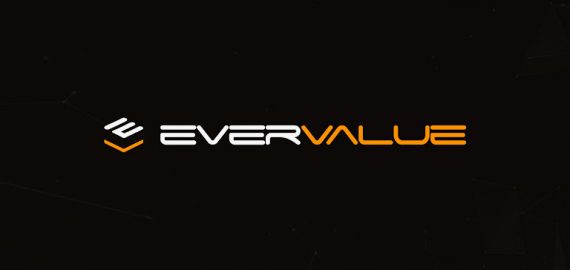Shielded Transactions 101: What You Should Know About This Powerful Privacy Technology


Privacy is a basic human right, yet it is one we are increasingly compelled to fight for. Online and on the streets, constant surveillance risks stripping citizens of the ability to go about their business undisturbed. This is a particular problem when transacting online. Banks and payment processors scrutinize every transaction and retain the power to unilaterally freeze, cancel, and censor.

Blockchain transactions, while free of such censorship, introduce a problem of their own: the public nature of crypto networks lays financial information bare for all the world to see. While useful in demonstrating that data hasn’t been tampered with, this is a privacy nightmare in that it broadcasts your net worth to the world.
Thankfully, for every problem crypto creates, it engineers a solution, and, in this case, it comes in the form of shielded transactions: opt-in privacy that provides all the benefits of blockchain without the public data disclosure.
The Shield That Protects Your Identity
Pioneered by Zcash and iterated upon by subsequent privacy protocols, shielded transactions are a type of cryptographic transaction that provides confidentiality for the participants. This is achieved by obfuscating critical information that would otherwise allow third parties to scrutinize the transaction data including the wallet balance of the counterparties.
With most cryptocurrencies, transaction details are visible on a public blockchain, including the sender, receiver, and the amount sent. While the identities behind the addresses may be pseudonymous, the transaction history is entirely transparent and accessible to anyone. This transparency raises concerns about user privacy and security, as it is possible to trace and analyze financial activities onchain. An entire industry has sprung up around onchain surveillance, with governments funding companies that can combine on- and off-chain sources to identify crypto users.
To counter this gradual erosion of privacy, which reveals more of a user’s digital footprint the more they transact onchain, shielded transactions have been developed. They provide a means of masking critical data which is achieved using a type of zero-knowledge proof called a zk-SNARK.
The full name for this tech is Zero-Knowledge Succinct Non-Interactive Argument of Knowledge, which is why most people prefer to refer to SNARKs. Shielded transactions that use this technology allow the sender, receiver, and transaction amount to remain encrypted and hidden from public view.
How Shielded Transactions Work
When you make a private transaction using a cryptocurrency network that supports shielded transactions, the critical data is encrypted and hidden from public view. Thanks to the use of zero-knowledge proofs, the prover (the sender) can demonstrate to the verifier (the network) that certain statements, such as the transaction amount, are true without revealing any other information.
In Zcash, zk-SNARKs are used to demonstrate that the transaction is valid and that the sender has sufficient funds for the transaction. This is achieved without revealing the specific inputs and outputs of the transaction. By employing these techniques, Zcash provides an additional layer of privacy for users who wish to transact without exposing their financial activities to the public eye. Individuals can choose to use either a transparent address or a shielded address, depending on their desired level of privacy.
While shielded transactions in Zcash offer strong privacy guarantees, they do require more computational resources and thus are typically more expensive in terms of transaction fees. Users may decide that this is a small price to pay, however, for keeping their financial data to themselves.
The Evolution of Shielded Transactions
Traditionally, shielded transactions have been used to transfer the native asset of a blockchain between parties such as transferring ZEC on the Zcash blockchain. But the same technology can be purposed to transfer a much broader array of assets. Layer1 chain Namada, for example, has developed a way for virtually any kind of asset to be transferred in this manner – including non-fungible tokens. Fittingly, it’s planning a first-of-its-kind shielded airdrop to Zcash users.
Because Namada works with IBC-based Cosmos chains (as well as Ethereum), users can enjoy shielded transactions without being penalized by high fees. To solve the challenge of privately transferring a broad range of token types, it’s developed a multi-asset shielded pool (MASP) circuit. Applying a common shielded set to all assets means that observers can’t distinguish between the assets being transferred. This further strengthens anonymity, making it impossible for a third party to guess the token type, let alone the amount being set.
One of the chief ways of increasing blockchain privacy is by normalizing it. With chains such as Zcash, only a minority of users elect to use shielded transactions. Making it easier for users to access onchain privacy – and ensuring that they are not penalized for doing so – is key to ensuring broader adoption.
Thanks to zk-SNARKs and shielded transactions, crypto users have the ability to safeguard their financial data. As more protocols and networks integrate this technology, there is hope that onchain privacy will go from being the exception to the norm.
Keep track of cryptocurrency distributions in our Airdrops Calendar.
Disclaimer
In line with the Trust Project guidelines, please note that the information provided on this page is not intended to be and should not be interpreted as legal, tax, investment, financial, or any other form of advice. It is important to only invest what you can afford to lose and to seek independent financial advice if you have any doubts. For further information, we suggest referring to the terms and conditions as well as the help and support pages provided by the issuer or advertiser. MetaversePost is committed to accurate, unbiased reporting, but market conditions are subject to change without notice.
About The Author
Gregory, a digital nomad hailing from Poland, is not only a financial analyst but also a valuable contributor to various online magazines. With a wealth of experience in the financial industry, his insights and expertise have earned him recognition in numerous publications. Utilising his spare time effectively, Gregory is currently dedicated to writing a book about cryptocurrency and blockchain.
More articles

Gregory, a digital nomad hailing from Poland, is not only a financial analyst but also a valuable contributor to various online magazines. With a wealth of experience in the financial industry, his insights and expertise have earned him recognition in numerous publications. Utilising his spare time effectively, Gregory is currently dedicated to writing a book about cryptocurrency and blockchain.

















































